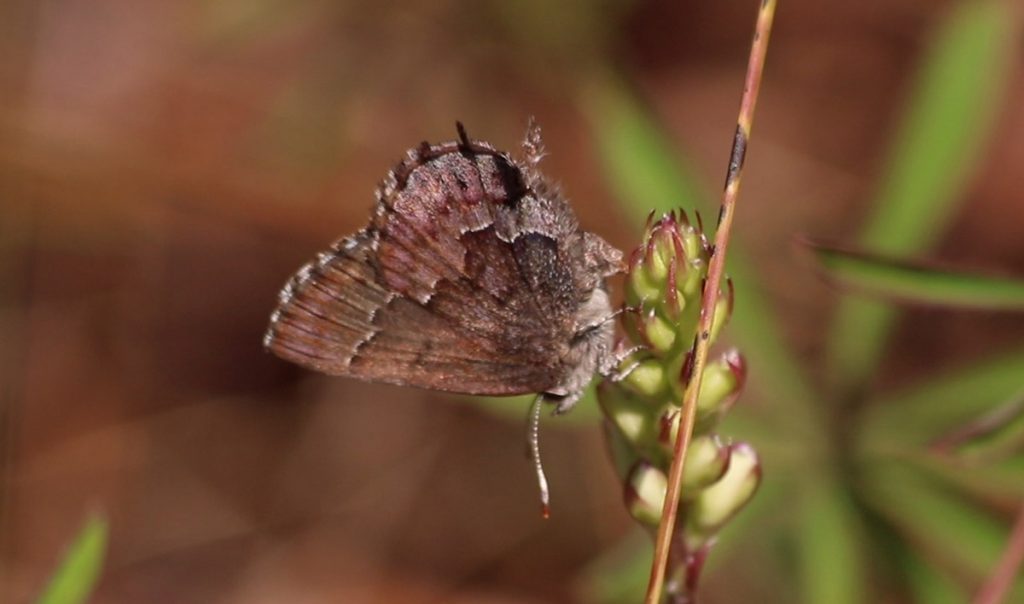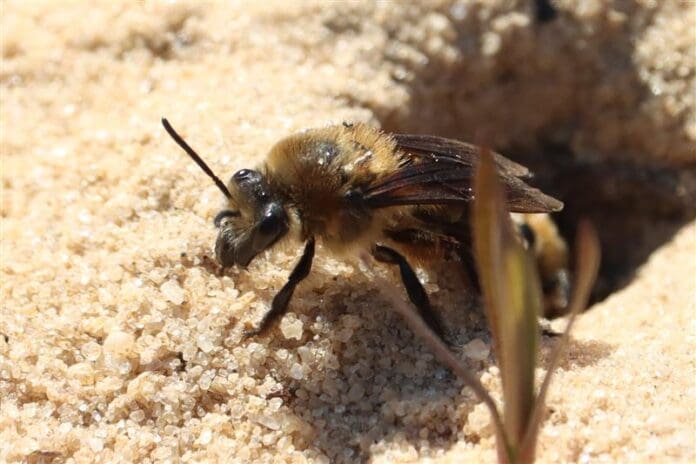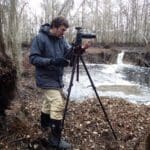Originally Published May 7, 2024 on the WFSU Ecology Blog
How does one attempt to find the rare and specialized sandhills cellophane bee? It’s the kind of story our Ecology Producer always hopes for. This segment was produced in collaboration with NOVA | PBS. All photos by Rob Diaz de Villegas unless otherwise specified.
A couple months ago, I decided to undertake a mission. It started with a curiosity: I wanted to know how researchers use iNaturalist data. This wasn’t the mission – it was a segment idea, but it led me there. I talked to biologists to identify species of interest to them, things I could find as winter turned to spring. The plants and animals they told me about all happened to be inhabitants of the sandhill habitat.
The first was a butterfly familiar to me. The frosted elfin is disappearing from its range, and researchers are searching for its host plant. The more places they find sundial lupine, the more places where they might find elfins trying to lay eggs on them.


Next, I talked to botanists who recently discovered three new species of lupines. Many of the plants had previously been identified as other lupine species; now researchers are reclassifying existing iNaturalist records and seeking out new locations. The new species are in the Florida peninsula, far from where I live.
Then there’s the sandhills cellophane bee. This bee was discovered a few years ago, yet it doesn’t have many known sites. Like the species I previously mentioned, it’s a sandhill inhabitant. But it specializes in the flower of a plant that grows in cypress wetlands. It needs the two habitats in close proximity, which limits the potential locations where we might find it.
I love photographing bees, especially when I can find a rare or uncommon species. The sandhills cellophane bee – this was the mission.
Rob Diaz de Villegas is a senior producer for television at WFSU Public Media, covering outdoors and ecology. After years of producing the music program OutLoud, Rob found himself in a salt marsh with a camera, and found a new professional calling as well. That project, the National Science Foundation funded "In the Grass, On the Reef," spawned the award-winning WFSU Ecology Blog. Now in its tenth year, the Ecology Blog recently wrapped its most ambitious endeavor, the EcoCitizen Project.
Rob is married with two young sons, who make a pretty fantastic adventure squad.



